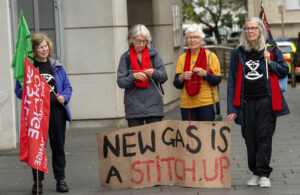Starbucks to cut emissions by 2030, but is it soon enough?
In an open letter to the public, the CEO of Starbucks, Kevin Johnson has pledged that the company will become ‘resource positive’ by 2030.
Starbucks recently worked with the World Wildlife Fund (WWF) to calculate the carbon, waste and water footprint of its operations and supply chain.
Since this, the company has made various promises to improve its sustainability.
They have pledged to expand plant-based options in-store, shift from single-use to reusable packaging, invest in ethical projects, work out better ways to manage and reduce waste and develop more eco-friendly stores.
To begin with, Kevin Johnson has announced that the company will have three preliminary targets for 2030.
- 50% reduction of the carbon emissions in their direct operations and supply chain
- 50% water reduction for direct operations and coffee productions
- 50% reduction of waste that is sent to landfill
Kevin Johnson wrote in the letter: ‘As we approach the 50th anniversary of Starbucks in 2021, we look ahead with a heightened sense of urgency and conviction that we must challenge ourselves, think bigger and do much more in partnership with others to take care of the planet we share.’
However, these promises are not without criticism, with various campaigners arguing that their targets are too distant.
Greenpeace USA plastics campaigner, Kate Melges, said: ‘While it’s a welcome development that Starbucks is revisiting its sustainability strategy, the company still has a lot to figure out as to how to make it happen as quickly as possible.
‘When it comes to the climate crisis, increasing deforestation, water shortages and mounting plastic pollution, we don’t have decades to wait for action.
‘Starbucks new sustainability commitments are light on specifics.
‘Without more detailed plans on how they will make this happen, it’s difficult to say the solutions Starbucks pursues will be taking us in the right direction.
‘Just last year, Starbucks touted a new plastic lid that is not recyclable in most locations and actually uses more plastic than its previous lid and straw combined.
‘If the company is planning to get serious about sustainability, it must prioritise shifting from throwaway packaging to reusables – and we don’t have ten years to wait.’
Photo Credit – Pixabay















